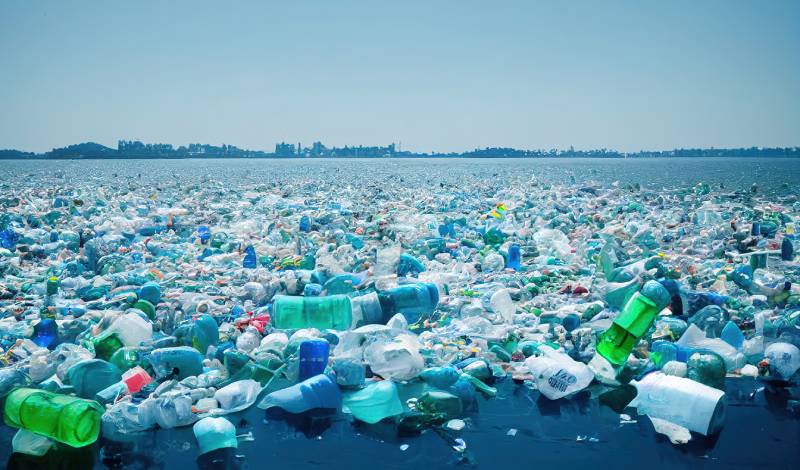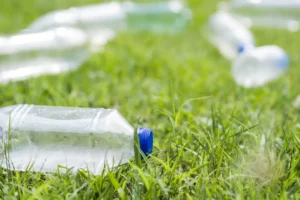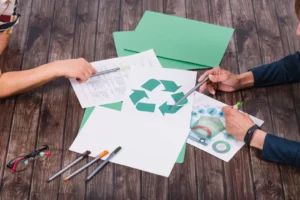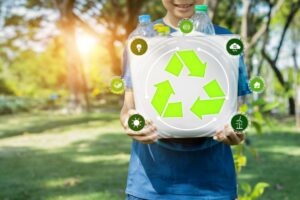Wide-spec plastic is a type of material that has been used widely in the production of consumer products. It is often chosen for its low manufacturing costs and versatility, however, its use has resulted in severe environmental consequences due to the lack of circularity in its disposal.
Here’s an article that we have written in order to explore how wide-spec plastic contributes to waste and how it negatively impacts the environment. The article will further shed light on discussing the strategies to reduce the impact of wide-spec plastic & the potential solutions for a more circular economy in order to create a sustainable future.
What is Wide-Spec Plastic?
The use of materials with specifications outside the standard range may result in an increased amount of unusable material, thereby reducing its potential for reutilization.
Wide-spec plastic is a type of material that has a wide range of specifications, falling outside what is considered within the industry standard. This means that when creating products from this material, there is often more waste produced as compared to other materials with narrower specification ranges. As such, it can lead to less circularity and more waste being generated than would be seen with other materials.
Wide-spec plastic also tends to cost more than other plastics due to its lower production yields and additional processing requirements needed for quality assurance purposes. This further contributes to an increase in costs related to using this material while not necessarily providing any benefits when compared to alternatives.
Therefore, organizations should carefully consider if wide-spec plastic is necessary or if another material might provide suitable results without generating as much waste during production processes.
How Does Wide-Spec Plastic Contribute to Waste?
By failing to adhere to specific standards, a lack of circularity is created which results in an excess of discarded materials.
Wide-spec plastic is produced when the resin used does not meet the required specs for making a particular product, leading to a “downgrade” in quality and usability.
This type of plastic cannot be recycled or reused and must be discarded as waste, since it does not meet the standard specifications needed for any purpose.
As such, wide-spec plastic contributes significantly to global waste production, accounting for large amounts of non-recyclable material that ends up in landfills or incinerated.
The high levels of waste generated by wide-spec plastic are unsustainable and can have a significant environmental impact if left unchecked.
Not only does this contribute to rising levels of pollution but also depletes natural resources faster than they can regenerate.
To reduce this kind of wasteful production practices, manufacturers should strive for higher standards when creating products using plastics and other materials, with an emphasis on reuse and recycling instead of disposal.
In turn, this will lead to more efficient use of resources while minimizing damage caused to the environment from excessive waste generation.
The Negative Effects of Wide-Spec Plastic on the Environment
The production of wide-spec plastic results in an abundance of non recyclable material, leading to a decrease in circularity and an increase in waste generation, which can have detrimental effects on the environment.
Without proper disposal systems for such materials, these plastics can end up in the natural environment, where they may leach toxic chemicals into soil or water sources. Furthermore, the presence of these materials affects wildlife by blocking out sunlight and creating a thick layer of debris which can suffocate them.
When burned without adequate control measures, it can produce noxious pollutants that damage human health and ecosystems alike. Finally, landfills filled with wide-spec plastics are not only eyesores but also generate large quantities of methane gas or other hazardous substances that contribute to climate change.
To reduce the environmental impacts caused by wide-spec plastic waste, governments should implement policies that promote reuse and recycling as well as stricter regulations on its production and disposal. Consumers should also be educated about how their purchasing decisions affect the environment so they become more conscious when shopping for goods made from plastic.
Taking proactive steps to reduce our consumption is essential to curbing the damaging effects wide-spec plastics have on our planet.
Strategies to Reduce the Impact of Wide-Spec Plastic
Reducing the environmental impacts of wide-spec plastic requires collective action to encourage reuse, recycling, and regulation of its production and disposal.
Reuse is a key strategy for reducing waste due to wide-spec plastic as it allows products to be used multiple times before being discarded. Governments can implement policies that promote product reuse, such as extended producer responsibility systems which require manufacturers to take responsibility for their products when they have been discarded at end-of-life.
Moreover, collecting used plastics in a centralized system can allow them to be recycled into new items or transformed into other useful materials. Such initiatives may include redesigning packaging with reusable materials or encouraging consumers to bring their own containers when shopping in order to reduce single-use plastics.
Regulation of production is another important step in minimizing the negative effects of wide-spec plastic on the environment. Governments should set limits on the amount of plastic produced by industries and ensure that toxic chemicals are not included in the material makeup of plastics.
Measures such as taxation on certain types of plastics could be implemented in order to disincentivize their use while incentivizing greener alternatives like bioplastics or compostable packaging.
With proper disposal practices in place, wide-spec plastic will not end up polluting landfills or oceans and contribute further damage to nature’s ecosystems.
The Future of Wide-Spec Plastic and the Circular Economy
Moving towards a circular economy is essential for limiting the environmental impacts of wide-spec plastic, like a ship steering away from turbulent waters. The concept of a circular economy focuses on reducing waste and reusing materials. This type of approach can be applied to wide-spec plastic by utilizing existing resources rather than creating new ones.
The development of innovative recycling and reuse methods can help reduce the amount of waste produced by this material while also providing economic benefits. For example, recycled plastics can be used in production processes or turned into products that have value in the marketplace. Advances in technology such as 3D printing could create opportunities for efficient and cost effective ways to reuse plastic parts without compromising quality or safety standards.
The transition to a circular economy will require cooperation between governments, businesses, and consumers alike. Governments must implement regulations that encourage stakeholders to take actionable steps towards the goal of reducing waste and developing sustainable alternatives. Businesses should strive for technological advancements that enable more efficient use of resources while still maintaining safety standards for their products and services.
Consumers too have an important role to play; they should look for ways to support companies with responsible practices when making purchase decisions.
Ultimately, if all parties work together towards achieving these goals, then it may be possible to drastically reduce the amount of waste created by wide-spec plastic and move closer towards a more sustainable future where everyone benefits from its use.
Conclusion
The negative effects of wide-spec plastic on the environment have been well documented and are becoming increasingly difficult to ignore. Its impact is far reaching and has caused a decrease in circularity, leading to an increase in waste.
As such, it is essential to take proactive steps towards reducing the impact of this material, such as through reuse and recycling programs. In doing so, we can create a more sustainable future for generations to come while ensuring that our resources are used in the most efficient manner possible.
By replacing the outdated linear model with one that focuses on creating a closed loop system, we can ensure that less waste is generated and our planet’s resources are safeguarded for years to come.
Just as the moon illuminates our night sky, these strategies will allow us to illuminate a path toward a more sustainable future.







